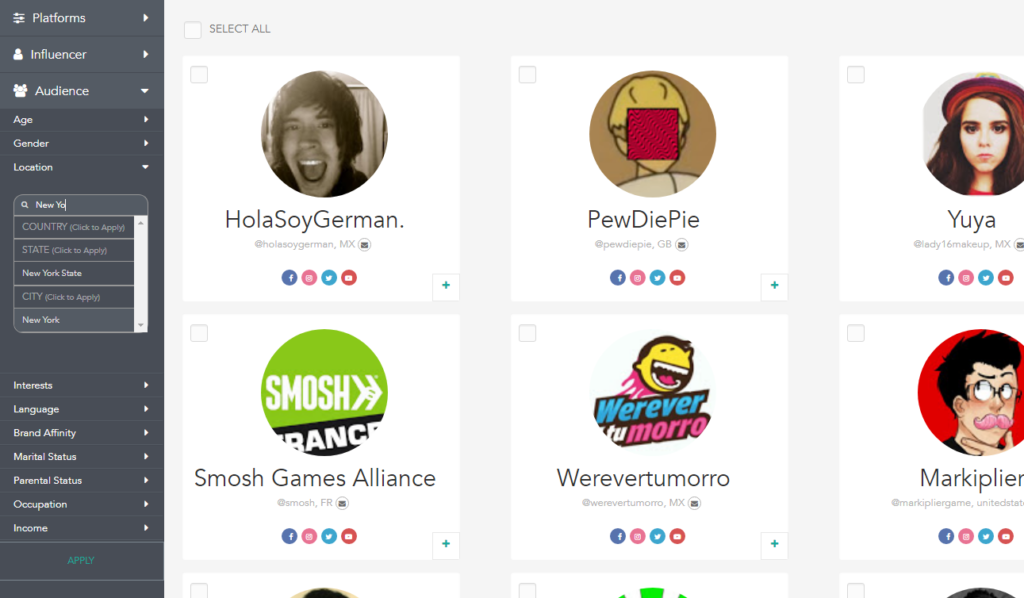For many in the restaurant business, influencer marketing remains a frontier. Rules can be hard to come by and the strategies everchanging. Add to that a layer of youth dominated lingo, and it’s easy to become overwhelmed.
But, the potential returns from influencer marketing on your business can’t be ignored. A 2015 case study revealed just how lucrative influencers can be for a restaurant.
Restaurants can generate $17.50 for every $1 spent on micro-influencers.
Social media influencers do this by helping to increase your restaurant’s brand awareness, loyalty, and engagement. Much of this success comes from the fact that these digital influencers have built a very loyal following of thousands, sometimes millions, that can be activated through positive brand sentiment.
And with 71% of consumers now more likely to make a purchase based on a social media reference, this trend is only going to continue.
So, to help you get started with influencer marketing we’ve outlined the following three tips for selecting the right social influencers for your first restaurant campaign.
Tip #1: Always start with the channel
Over two decades ago, Bill Gates declared “CONTENT IS KING”! Needless to say, Mr. Gates was right. From blogs to podcasts, social networks to videos, content drives the Internet as we know it today. But, with all the noise out there, how do you know which distribution channels are right for your business?
For restaurants, in particular, the visual presentation is key. It’s simple, pictures sell. People love photos of food. According to a recent study by Maru/Matchbox, it may matter more than you think:
“69 percent of millennials are now taking a photo or video of their food before eating.”
There is a reason mobile delivery apps like Grubhub, Postmates, and Uber Eats all rely on photo menus. Seeing a fresh dish is much more enticing than reading about it. It has taken a step further on review sites like Yelp where real customers can leave feedback alongside an uploaded image of their meal.
So if you are trying to drive customers into your restaurant, you’ll want to consider channels that present the best opportunity for visual success. Networks like Instagram, Pinterest, YouTube, and even Facebook are good choices, as they all allow your restaurant’s food to take center stage on an influencer’s profile.
Tip #2: All Marketing Is Local
Former U.S. Speaker of the House Tip O’Neill famously coined the phrase “All politics is local” after losing an election in 1935. Fast Forward 80 years and restaurants would do well to consider applying that sentiment to their brand marketing today – all marketing is local.
You wouldn’t want a Florida Instagram account pushing your Chicago pizza chain. As a restaurant brand, you need to concentrate your efforts where potential is greatest and that typically means as closest to your business as possible.
So, after you’ve selected the social channels for your campaign, it’s important to think about the geography of BOTH your social media influencer(s) and their audience. Using an influencer marketing tool like NeoReach makes it easy to do this. You can quickly segment and evaluate potential influencers by social platform, geography, and even audience demographics:
Using a tool like this will also help give you a good idea of how broad, or narrow, to go with your geographic targeting. If you are a single restaurant, a narrow approach with numerous influencers overlapping might make sense. But, if you are a regional chain, you’ll want to think more broadly about your target pool of influencers.
Tip #3: Micro Over Macro
With your channels and target geography selected it’s time to get the most bang for your influencer buck by selecting the right level of popularity of your influencers.
At its most basic, there are two types of social influencers to consider: Macro and micro influencers. Within the macro influencer space, you’ll find influencers with millions of fans across multiple channels, scattered around the country. These individuals tend to also be celebrities in their own right, most in other more traditional entertainment verticals.
If you were selling the latest and greatest wireless headphones or organic face wash, you might consider engaging one or two of these macro influencers, since geography isn’t a restraining issue and broad brand awareness is likely beneficial to your bottom line.
But, for our purposes, we want to look towards the opposite end of the spectrum – micro influencers. While there is no strict definition of a micro influencer, expect their followers to be somewhere in the range of 1,000 – 90,000, as compared to the hundreds of thousands, to millions, you’d find in the macro space.
And while there are many reasons to use micro influencers, the following benefits highlight why this group of social influencers is perfect for your next restaurant campaign:
- Micro influencer content is typically more focused, presenting itself as more relatable and attainable to the audience, which is ideal for most restaurant businesses.
- Micro influencers cost much less, which means you may get more brand saturation in your market.
- Micro influencers offer restaurant brands a much more personal brand experience, often presenting a warm, local presence with friends and family in your community.
*Useful tip: Many micro and hyper-local influencers typically are glad to share their experience in exchange for a meal.
The use of micro influencers also results in a significantly higher engagement rate for brands, as a recent Ad Age study found. In particular, millennials often see micro influencers more as peers than celebrities. This is an important distinction when you consider the weight peer recommendations have on customer decisions.
Bringing It All Together
To recap, you need to first identify the channel that is best for your campaign. In this case, we want image-centric social platforms, like Instagram. Remember, presentation is key.
Next, we need to identify the geographic boundaries for our campaign. Where should our influencers live? How about their audience? Tools like NeoReach can help you answer those questions.
Lastly, we need to make sure we filter our influencer pool down to include cost-effective, on brand micro influencers. Again, using a tool like Neoreach really comes in handy here so you can filter for things like age, gender, and past influencer engagement rates to make sure you are getting the best influencers you can and the most out of your budget.
Remember, much like cooking, a successful influencer campaign favors the prepared hand.
—
Are you marketing for a restaurant? Email us at team@neoreach.com and we’ll send you a free list of foodies in your city!
























